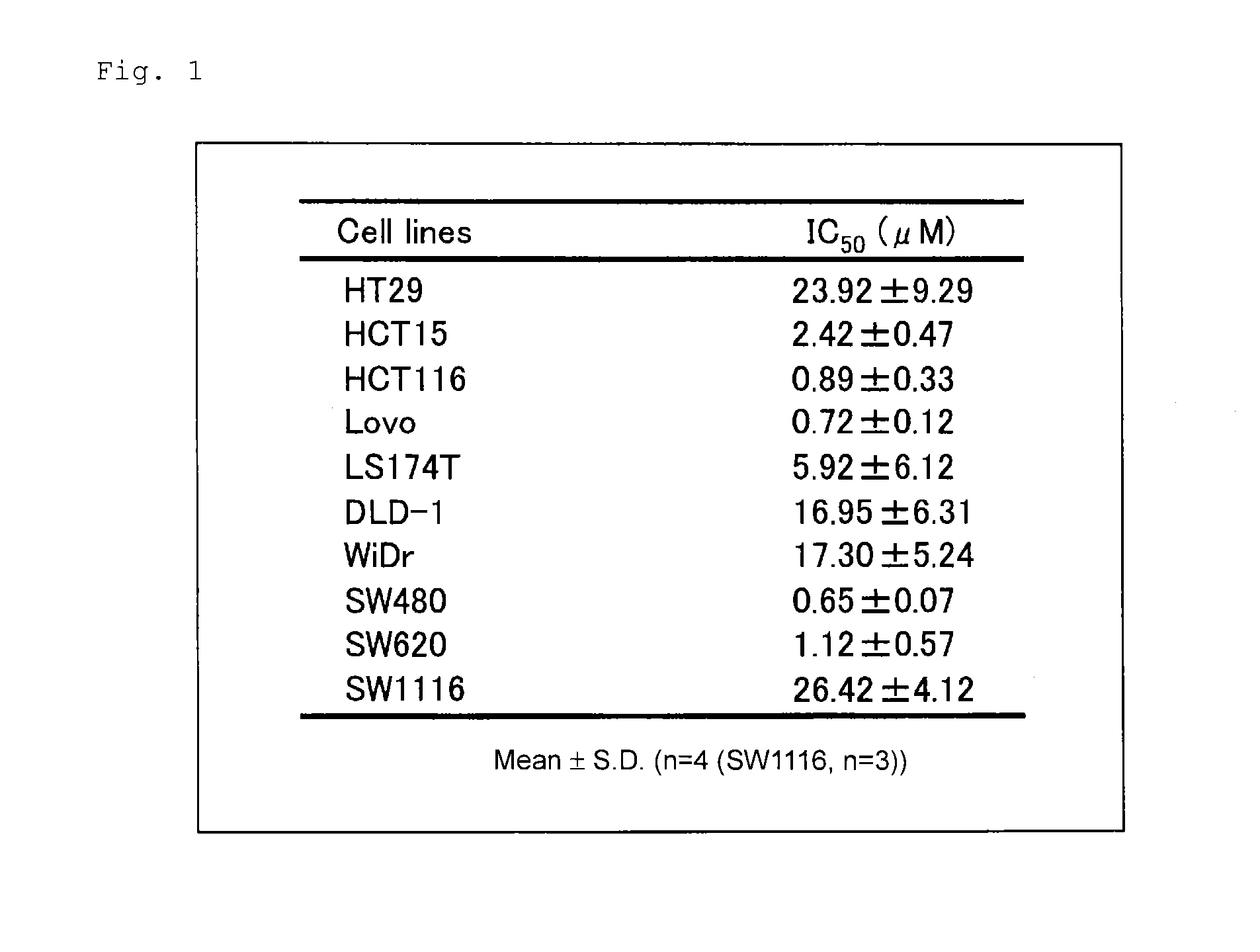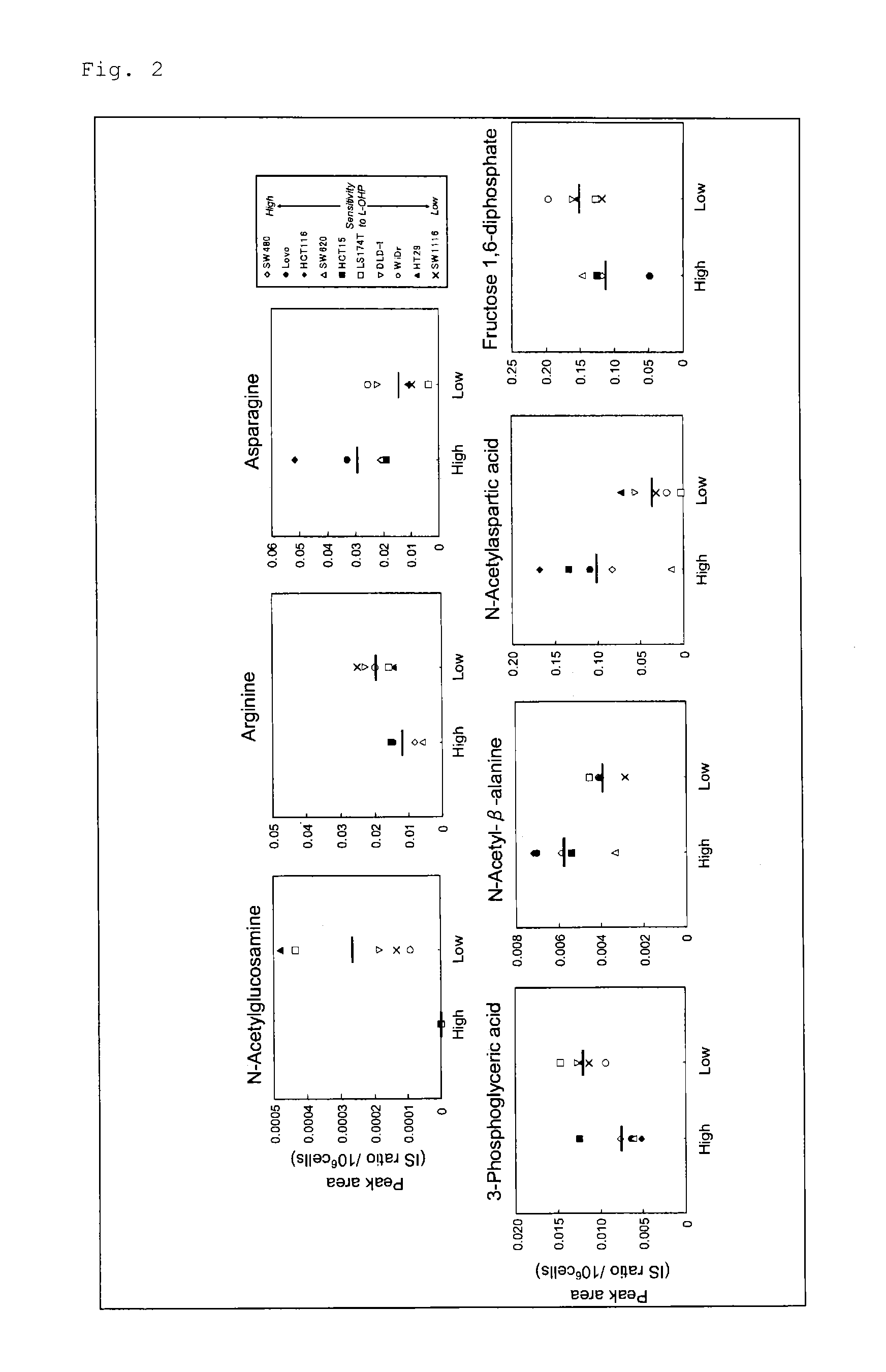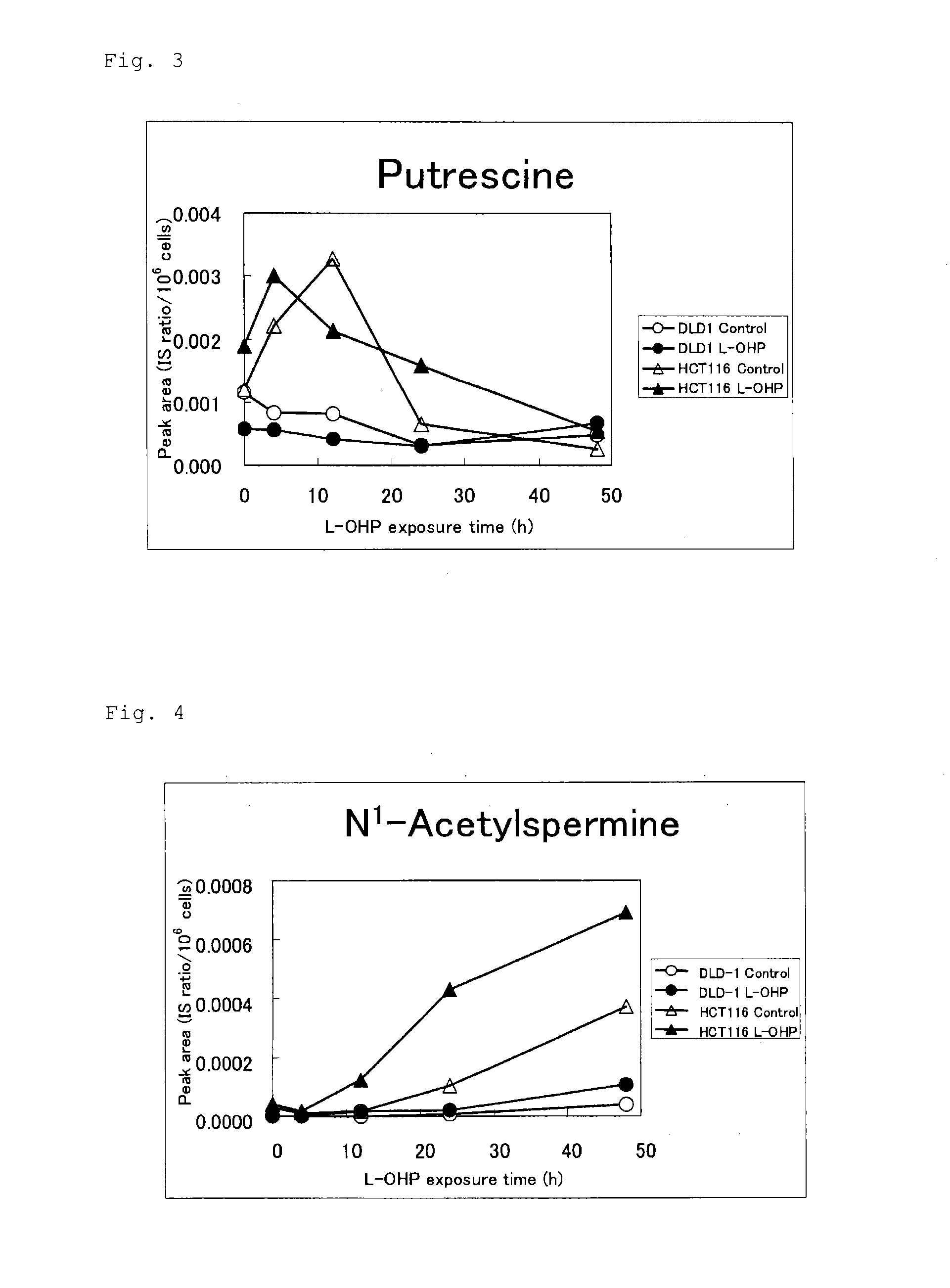Marker for determination of sensitivity to anticancer agent
- Summary
- Abstract
- Description
- Claims
- Application Information
AI Technical Summary
Benefits of technology
Problems solved by technology
Method used
Image
Examples
example 1
(1) Method
(a) Cells Employed
[0127]Ten human colorectal cancer cell lines (DLD-1, HCT15, HCT116, HT29, Lovo, LS174T, SW480, SW620, SW1116, and WiDr) were employed. HCT116 and HT29 were obtained from Kabushiki Kaisha Yakult Honsha. DLD-1, Lovo, SW480, SW1116, and WiDr were obtained from Dainippon Sumitomo Pharma Co., Ltd. HCT15 and LS174T were obtained from Cell Resource Center for Biomedical Research, Institute of Development, Aging and Cancer, Tohoku University. SW620 was obtained from Summit Pharmaceuticals International Corporation.
(b) Drug
[0128]L-OHP powder was obtained from Kabushiki Kaisha Yakult Honsha.
c) Evaluation of Sensitivity of Cancer to L-OHP
[0129]Cancer cells of each cell line were exposed to 0- to 1,000-μmol / L L-OHP for 48 hours and after drug exposure, cell viability was determined by means of an MTS assay (CellTiter96™ AQueous One Solution Cell Proliferation Assay, Promega). IC50 value (L-OHP concentration at which cell growth is inhibited by 50% as compared with L-...
example 2
(1) Method
(a) Cells Employed
[0136]Among the cell lines employed in Example 1, two human colorectal cancer cell lines (HCT116 and DLD-1) were employed. Cell culturing was performed by means of a φ100 mm / Tissue Culture Dish (IWAKI) with a medium (Dulbecco's modified Eagle's Medium (DMEM) containing 10% fetal bovine serum (product of Invitrogen) at 37° C. under 5% CO2 conditions.
(b) Drugs
[0137]L-OHP powder was obtained from Kabushiki Kaisha Yakult Honsha. 5-FU powder was obtained from Sigma Aldrich Japan K.K.
(c) Exposure to L-OHP and Recovery of Metabolites in the Cells
[0138]The two colorectal cancer cells were exposed to L-OHP by changing the culture medium to a medium containing L-OHP at 10 μmol / L. The same culture was performed in an L-OHP-free medium (control group). After exposure to L-OHP (0 hr, 4 hr, 12 hr, 24 hr, and 48 hr), the cells were washed on ice with 5% mannitol (4° C.). Immediately thereafter, methanol (4° C., containing an internal standard) was added to the washed ce...
PUM
| Property | Measurement | Unit |
|---|---|---|
| Sensitivity | aaaaa | aaaaa |
| Level | aaaaa | aaaaa |
Abstract
Description
Claims
Application Information
 Login to View More
Login to View More - R&D
- Intellectual Property
- Life Sciences
- Materials
- Tech Scout
- Unparalleled Data Quality
- Higher Quality Content
- 60% Fewer Hallucinations
Browse by: Latest US Patents, China's latest patents, Technical Efficacy Thesaurus, Application Domain, Technology Topic, Popular Technical Reports.
© 2025 PatSnap. All rights reserved.Legal|Privacy policy|Modern Slavery Act Transparency Statement|Sitemap|About US| Contact US: help@patsnap.com



